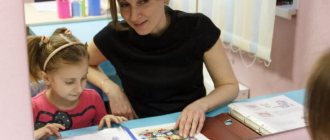Bradylalia manifests itself as a slower rate of speech.
The opposite diagnosis (too fast rate of speech) is tachylalia. With intact articulation and grammatical construction of phrases, words are pronounced more slowly than in the average case, and long pauses appear between them. Bradylalia manifests itself at any age, occurring in both childhood and adulthood. In mild cases, this syndrome is not noticeable to the speaker, but can interfere with communication. Interlocutors are not always comfortable communicating with someone who may exhibit bradyllia even to a slight degree.
Why does bradyllia occur?
Manifestations of a slow speech rate are explained by the prevalence of inhibition processes in the work of the higher nervous system and brain over excitation processes. The examination reveals lesions in the cerebellum and parts of the brain. Among the factors causing the formation of bradyllalia are:
- genetic (the tendency to slow speech is inherited);
- exogenous (intoxication, hypoxia in children during gestation and infancy);
- pedagogical (improper upbringing, the child’s tendency to imitate someone with such a speech feature).
Bradylalia can occur as an independent syndrome or as a concomitant manifestation characteristic of a disease. That is why it is important to conduct a thorough examination of the child in order to correctly determine the causes of such manifestations and take the necessary measures.
Why does bradyllia need correction?
Without correction, bradyphrasia can develop into stuttering. And this is already a problem of a convulsive nature. Although initially with bradylalia we are talking about a tempo-rhythmic pathology of a non-convulsive nature.
Slow speech in childhood can cause serious psychological problems. It is difficult for a child to communicate with peers and make acquaintances. Over time, there is a high probability that the baby will become shy, withdrawn and even less talkative.
Underdevelopment of communication skills affects intellectual abilities. Accordingly, attention, memory, and thinking suffer, which is bad for the educational process. It will be difficult for the child to study.
To prevent these problems, you should promptly seek help from our NeuroSpectrum Center for Pediatric Speech Neurology and Rehabilitation. It is necessary to consult a specialist if a child has speech development delay (SSD) or general speech underdevelopment (GSD). Our Center’s specialists have been helping for many years with the correction of bradyllalia and other disorders of oral and written speech.
How does bradyllia manifest? Symptoms
This syndrome can be expressed not only in speech manifestations, but also in motor ones.
Speech manifestations:
- A slowdown in the overall rate of speech, with damage not only to external speech, but also to internal speech.
- Significant decrease in reading and writing speed.
- Characteristic extended pronunciation of individual sounds.
- The presence of long pauses between words in sentences and phrases.
- Speech is characterized by monotony and little emotionality.
Motor manifestations:
- Movements are also slow and sluggish.
- Facial manifestations are reduced.
- Poorly developed general motor skills and coordination.
- Fine motor skills are also low.
As for children, parents notice the child’s low activity. He prefers to sit rather than run and jump. Such children are not very similar to “active researchers,” which is typical for an early age. You shouldn’t attribute everything to innate temperament and character traits. It is quite possible that the child belongs to the “contemplative” type, however, if, in addition to a phlegmatic character and reduced temperament, parents notice other manifestations described above, they should consult a specialist.
In adults, bradyllia sometimes occurs after a stroke.
Types of bradyllalia
With bradylalia, speech is slow, but connected - the patient speaks with difficulty and can express his thoughts. Often people with this disease experience severe psychological discomfort, as many avoid communicating with them. Because of this, the monotony of the voice develops, there is emotional lability, and there is practically no intonation in the conversation.
Conventionally, bradyllalia is divided into two types:
- Speech form - in this case, all the symptoms of a speech disorder are present, disorders of the nervous system are absent or mildly expressed. A person has difficulty speaking: when pronouncing individual sounds or words. When speaking certain words, speech slows down and pauses appear.
- Non-speech form - characterized by disorders of the nervous system: there may be muscle twitching, fine motor skills are upset. There is a tendency to freeze, the patient often repeats some words (persistence).
If the cerebellum is affected, which happens with birth injuries, they speak of the cerebellar form of the disease. In this case, the patient will have impaired coordination of movements, weak reflexes, unmodulated speech, characterized by a lack of intonation and overtones. This diagnosis is made by a neurologist when examining a patient.
It is usually difficult for a speech therapist to differentiate a specific type of disease; often the patient exhibits symptoms of classical and non-speech bradyllalia. Since the mechanism of the pathology is of a general nature, immediate speech correction begins.
Why do you need to correct and treat bradyllia?
Problems with communication can lead to psychological trauma in a child. Low activity and slow speech may interfere with his ability to communicate. As a result, the child may begin to feel shy, become withdrawn, and eventually speak less and less.
However, in this case it is not only a matter of communications, but also development. Low speech activity also reduces the formation of intelligence. This means that the growth of psychological functions - attention, memory, thinking - also suffers.
Developed speech according to age is necessary for mental development. It is for this reason that it is important to start working with a speech therapist as early as possible so that the child can develop and learn.
Causes of the disease
Tachylalia and bradylalia are diagnosed in both children and adults and are often accompanied by mental disorders. The causes are both psychological and biological in nature. The main thing is not to leave the disease unattended, as it progresses over time and interferes with social communication and study.
The main thing is not to leave the disease unattended, as it progresses over time and interferes with social interaction and study.
Tachylalia and bradyllalia can be caused by:
- transmission of the defect along the hereditary line;
- predisposition to the disease;
- exogenous factors that can contribute to the development of diseases;
- intoxication of the fetus (alcohol or food poisoning of a pregnant woman);
- Rhesus conflict, head injury, meningitis, encephalitis, etc.;
- psychological trauma and disorders (mistakes in raising a child, lack of attention and communication);
- imitating others who also suffer from speech impediment.
Diagnosis of bradyllalia
In order to determine the presence of a problem, special research is not required. The picture, as they say, is obvious. Slow speech is immediately noticeable. But due to the fact that bradyllia may be a consequence of any internal disorders, it is still recommended that the child be examined by a neurologist, speech therapist and psychologist. Sometimes, if an organic cause of the disorder is suspected, it may be necessary to do an MRI, EEG or REG of the brain.
Diagnosis of external speech is carried out by a speech therapist. He analyzes the state of the articulatory apparatus, notes the correctness of sound pronunciation, the rhythmic side of speech, and the intonation component.
In addition, the child’s level of development of fine motor skills, facial expressions, and intellectual development is also checked.
Diagnostic methods
In addition to the external manifestations of the disease, there are also internal disorders, which additional examinations will help determine. Studies (MRI, EEG, REG) of the brain will help determine the organic cause of the disease. If symptoms of bradylalia are observed in a child, consultation with specialists such as a neurologist, speech therapist, psychologist and psychiatrist is necessary.
Collecting a detailed history will help to study past illnesses and injuries, as well as determine the presence of bradyllia in the patient’s relatives. The speech therapist will diagnose the child’s speech, the functioning of the articulatory apparatus, intonation, rhythm, and correct pronunciation. The doctor will evaluate the emotional coloring and individual characteristics of speech. The neurologist will determine the neurological status, the level of fine motor skills and facial expressions, and analyze sensory functions. A psychologist will help you check your level of intellectual development. The patient is asked to write tasks and read individual words, phrases and texts. Based on a comprehensive survey, a map is drawn up.
The symptoms that accompany bradylalia reduce a person's ability to communicate. Low activity and inhibited speech can lead a child to psychological trauma. Communication with peers or adults for such children is reduced to zero. They become withdrawn, shy, and their vocabulary is depleted. All this negatively affects the development of the baby’s intelligence and mental abilities.
How to fix bradyllalia?
Correction of bradyllalia, like many other speech disorders, must be carried out comprehensively.
- Medical methods include the use of medications designed to stimulate the nervous system. These include strengthening and tonic agents prescribed by the doctor.
- Physical exercises aimed at improving coordination of movements, creative activities that stimulate fine motor skills, dancing, and singing will also be of great benefit.
- Physiotherapeutic treatment and, if necessary, massage courses are also prescribed.
- We are working with a psychologist.
Bradylalia. Slow speech.
When treating bradyllalia with a speech therapist, classes are aimed at the following points:
- development of rapid and clear speech in the patient
- acceleration of the rate of speech, writing and reading
- learning the correct placement of pauses and stresses
With severe bradykinesia, it is important to immediately normalize general motor skills: coordination, rhythm of general movements at an accelerated pace. Additionally, it is worth working on and developing auditory, visual attention, reproduction of rhythms, etc. Gradually connecting speech material to classes.
Speech correction is based on speech exercises. The main ones are:
— Studying the pronunciation of words, syllables, phrases, tongue twisters, etc.
— Reading
— Reading to a beat beat
- Listening and repeating what you hear
— Memorizing dialogues and speaking them
— Stage performances
Speech therapy rhythm classes help improve speech with bradyllalia: children move to an accelerated rhythm given to them, quickly march, run, perform exercises to rhythmic music, and play outdoor games with speech accompaniment.
Such exercises are performed counting, to control the pace of the exercises performed.
Rhythmic tasks for arms, legs and torso. They need to be carried out quickly and clearly. For example, clapping hands, waving flags, marking time, etc.
Singing melodies in different keys
Active games, both without a plot (traps, relay races, etc.), and with a plot (based on fairy tales or other life situations).
To speed up speech in children, it gradually occurs in several stages:
At the first stage, the speech therapist pronounces a simple phrase (for example, “the kitten drank warm milk”), setting the pace of speech (by conducting, clapping or tapping the rhythm on the table).
Children repeat the phrase several times, following the accelerating pace set by the speech therapist.
At the second stage, children quickly recite lines from a familiar poem.
The third stage of correctional work consists not only of stimulating the speed of speech, but also working on its expressiveness. They stage skits with the children, where they learn dramatizations based on roles, fixing the required tempo and rhythm of speech.
At the fourth (final) stage, children work with tongue twisters, which help consolidate acquired skills and develop speech motor skills.
Timely detection of the presence of speech pathology, as well as timely correctional work, give a positive prognosis for the development of the child’s speech skills. Treatment is successful with regular classes and comprehensive support from medical specialists. However, we draw your attention to the fact that even after positive correction of bradyllalia, the baby needs the control and support of his parents, since at first it will be difficult for him to monitor the state of his speech.
As a result, after a year of work, speech becomes much better. However, even after correctional work, long-term observation of children is necessary, because the child needs the control and support of his parents, since at first he himself will have difficulty monitoring the state of his speech. Recommended: self-study, constant monitoring of the rate of speech and consultations with a speech therapist.
Speech therapy correction of bradyllalia
In a comprehensive approach to correcting this speech disorder, the speech therapist plays the “main violin”. Work to correct bradyllalia should stimulate the speed of the child’s internal and external speech using special exercises:
- To speed up and increase the clarity of spoken phrases (tongue twisters and pure twisters are used with a gradual increase in tempo).
- To improve and speed up the work of inner speech (tasks on imagination, memory, intelligence).
- To increase the speed of reading and writing in schoolchildren.
- To develop expressiveness and emotionality of speech (oratory and stage speech).
In his work, the speech therapist suggests that the child speak at a certain speed - with a metronome or simply maintaining the tempo by clapping his hands. Thus, the ability to speak faster and control oneself is gradually developed.
Didactic and speech therapy games and exercises stimulate the speed of the internal work of thought, helping the child learn to act faster and more actively. Correction requires regular classes, but if the problem is not ignored, it can be dealt with, providing the child with the opportunity to successfully study and communicate with friends.
Date of publication: 07/07/2016. Last modified: 05/09/2018.
Symptoms and features of the disease
The typical clinical picture of bradyllalia is characterized by the following symptoms:
- slow speech rate;
- extended pronunciation of vowels;
- long pauses between words;
- long intervals between homogeneous syllables;
- slow reading and writing;
- additional symptoms: twitching of facial muscles, lethargy, apathy and general lethargy.
Patients with bradyllalia have difficulties with thinking - it is immediately difficult for them to orient themselves in what is happening, they take a long time to delve into some details. Such difficulties arise in severe forms of the disease; a mild degree of pathology affects only speech and slightly worsens a person’s quality of life.
Any form of bradyllalia must be treated, and all patients with this disorder should undergo recovery under the supervision of specialists. The sooner treatment is started, the better the prognosis. In our speech center we are always ready to help people with this problem; we offer rehabilitation using modern safe training without drugs or hypnosis.
In our center you can undergo treatment for childhood stuttering in Moscow. We conduct trainings with leading specialists who have confirmed their skills during practice!
Corrective work for bradyllalia.
Correcting bradyllalia requires complex work.
Medical correction of this disorder is aimed at increasing the activity of nervous activity and normalizing the speed of mental processes; it is tonic in nature. Psychotherapeutic influence is also used to change the attitude towards one’s own speech.
When working with adults, auto-training is used. Physical education classes, which contain toning exercises for various parts of the body and can be combined with exercises for the voice and breathing, are also very useful.






